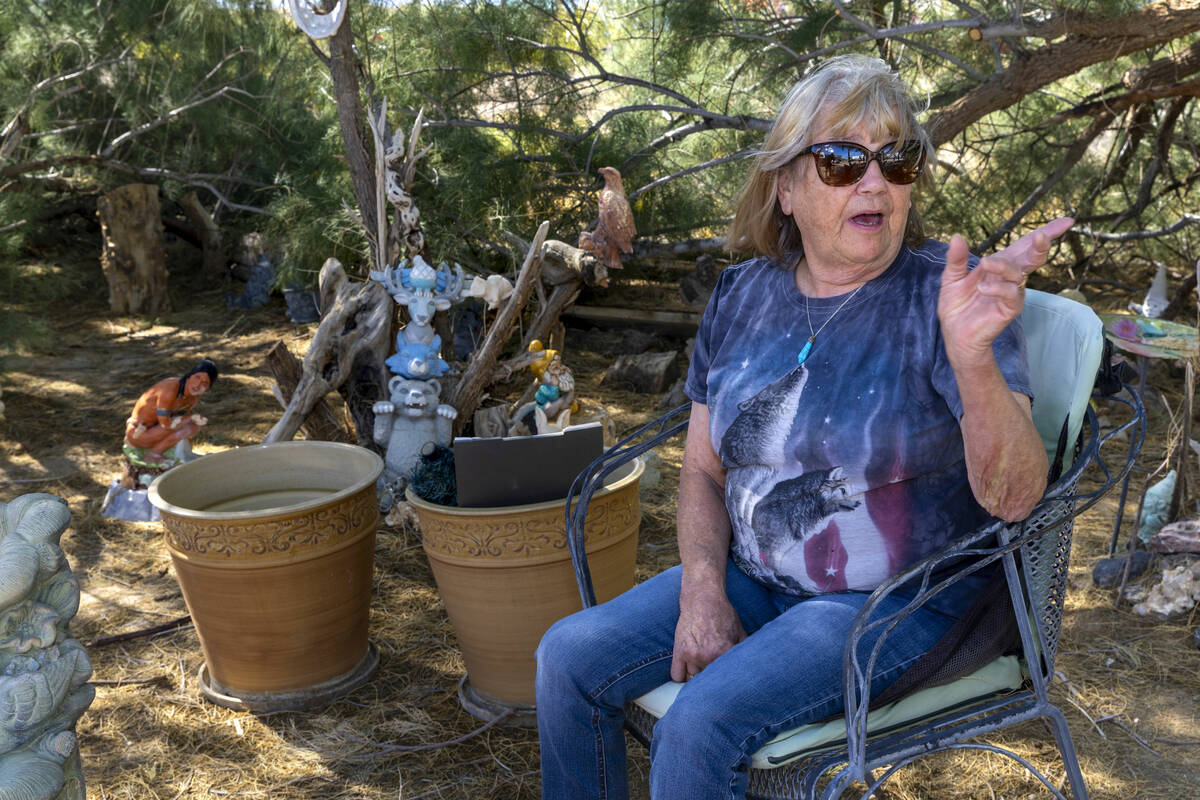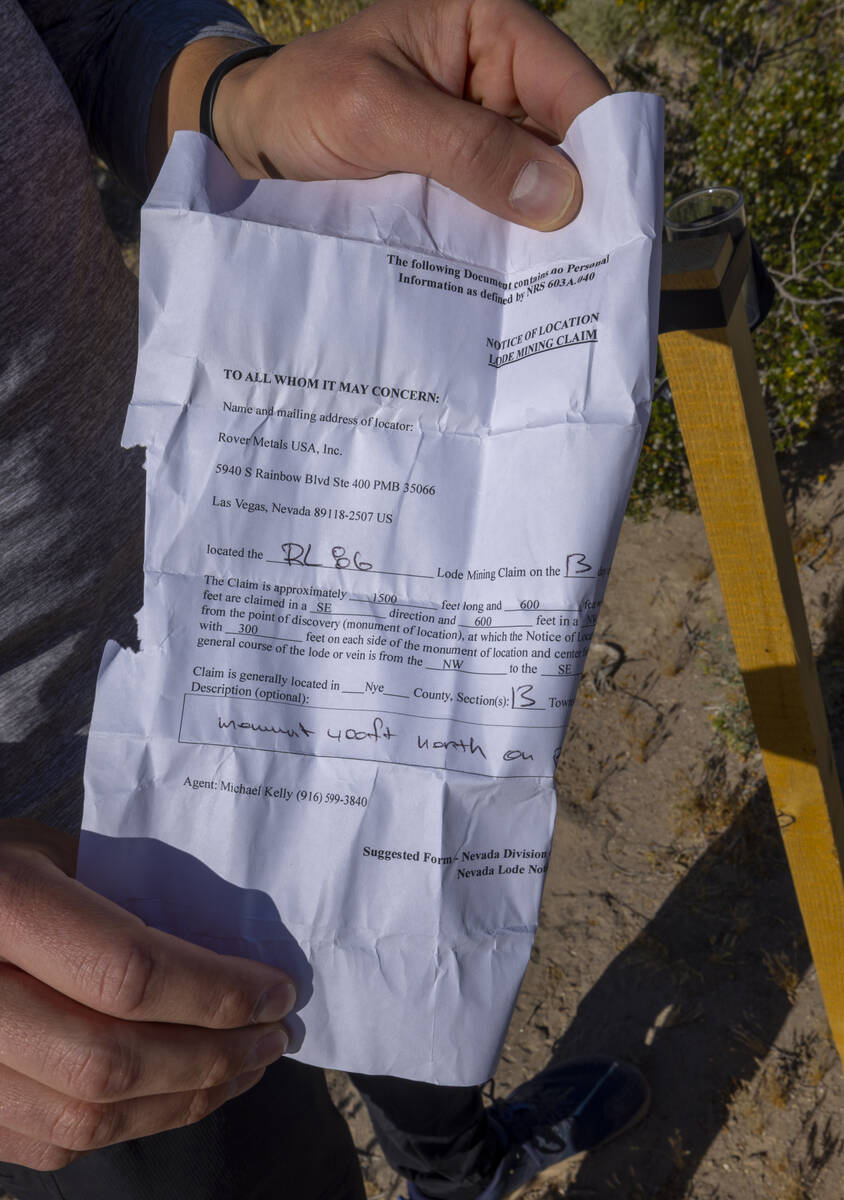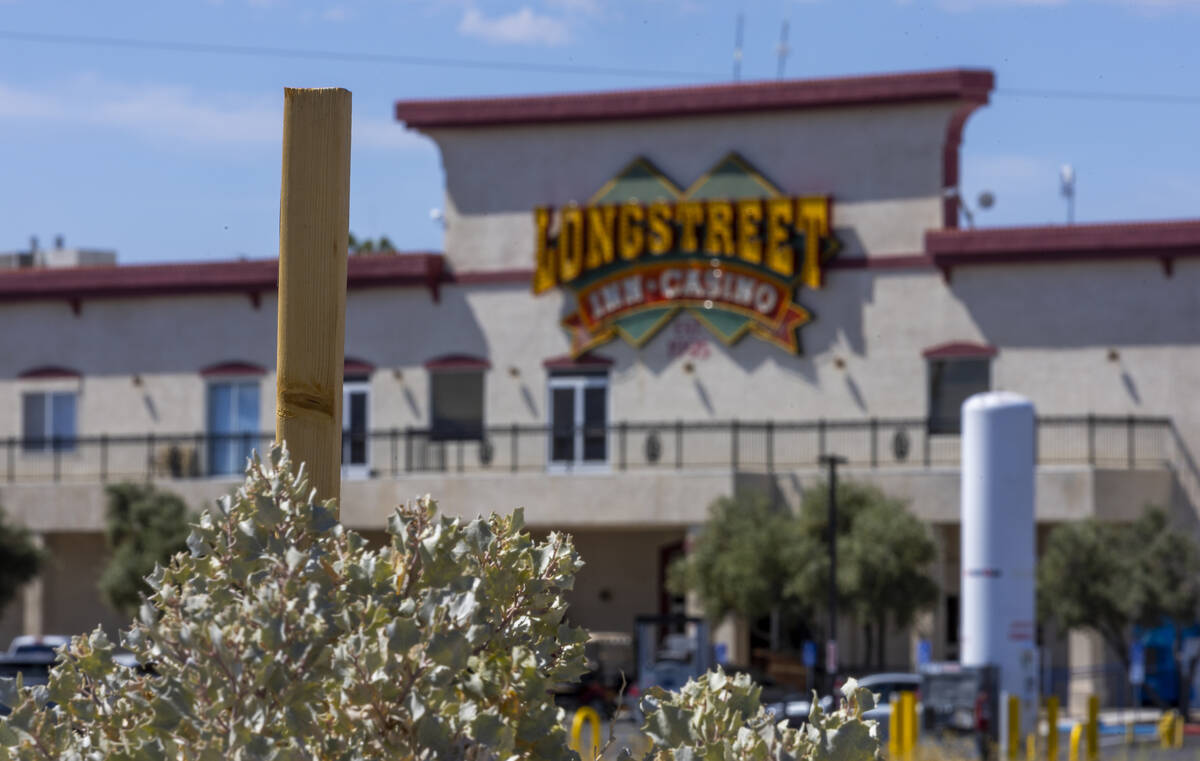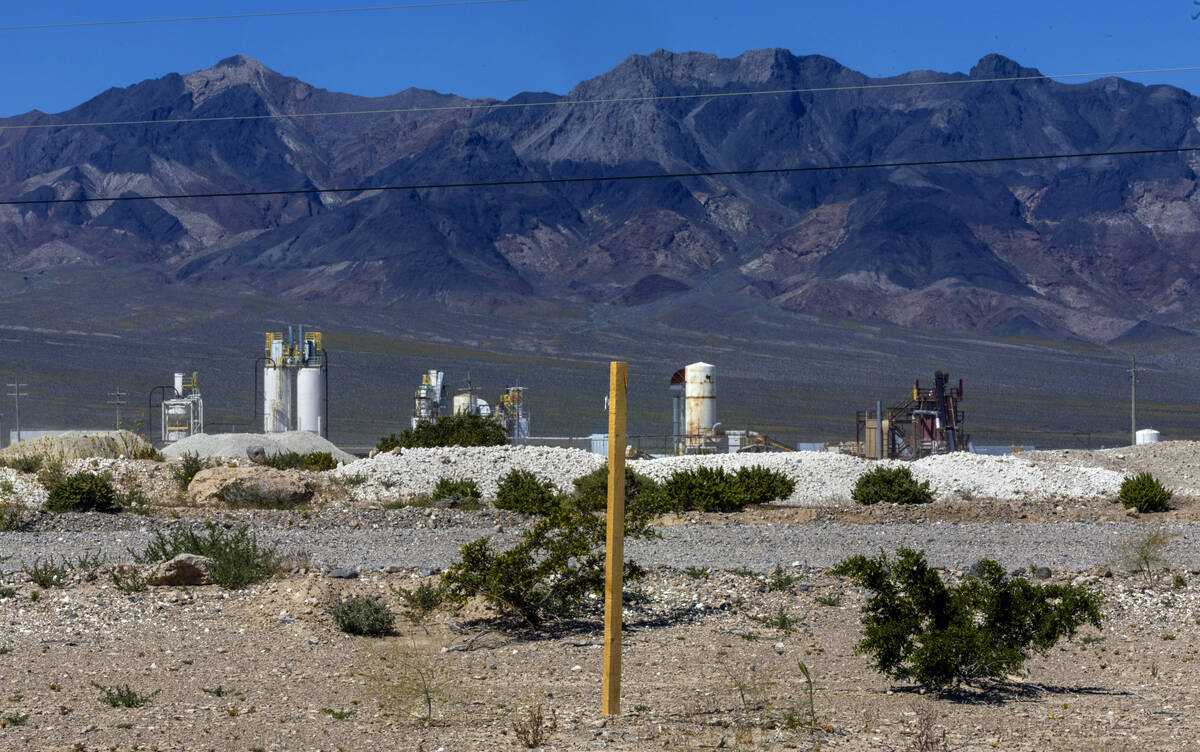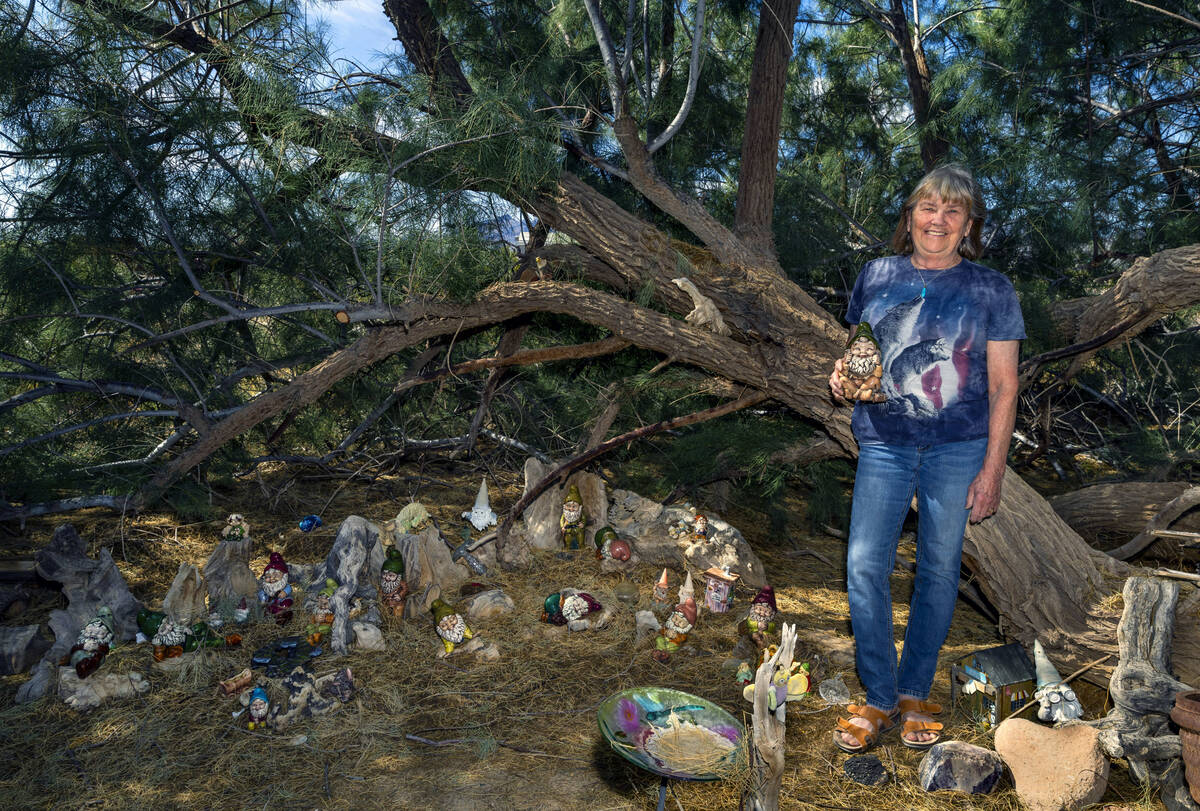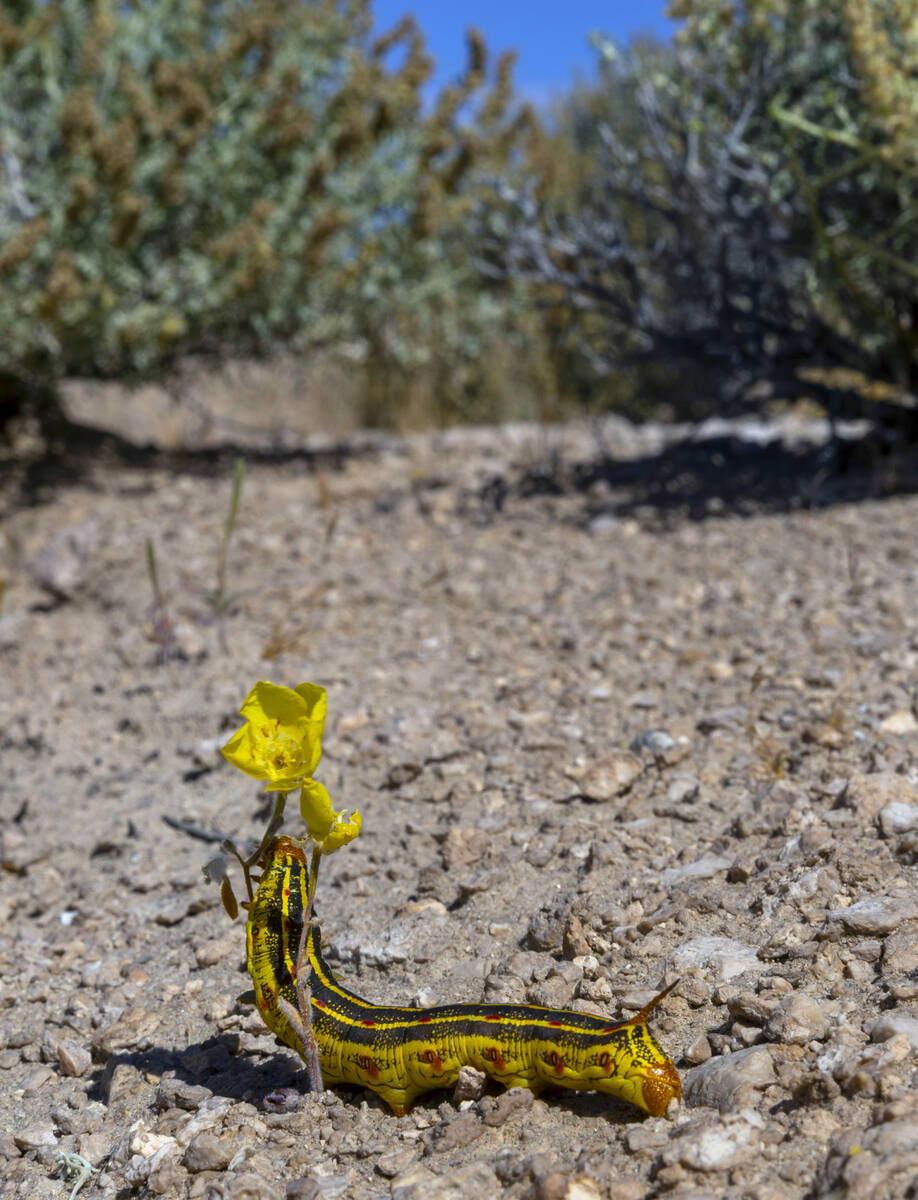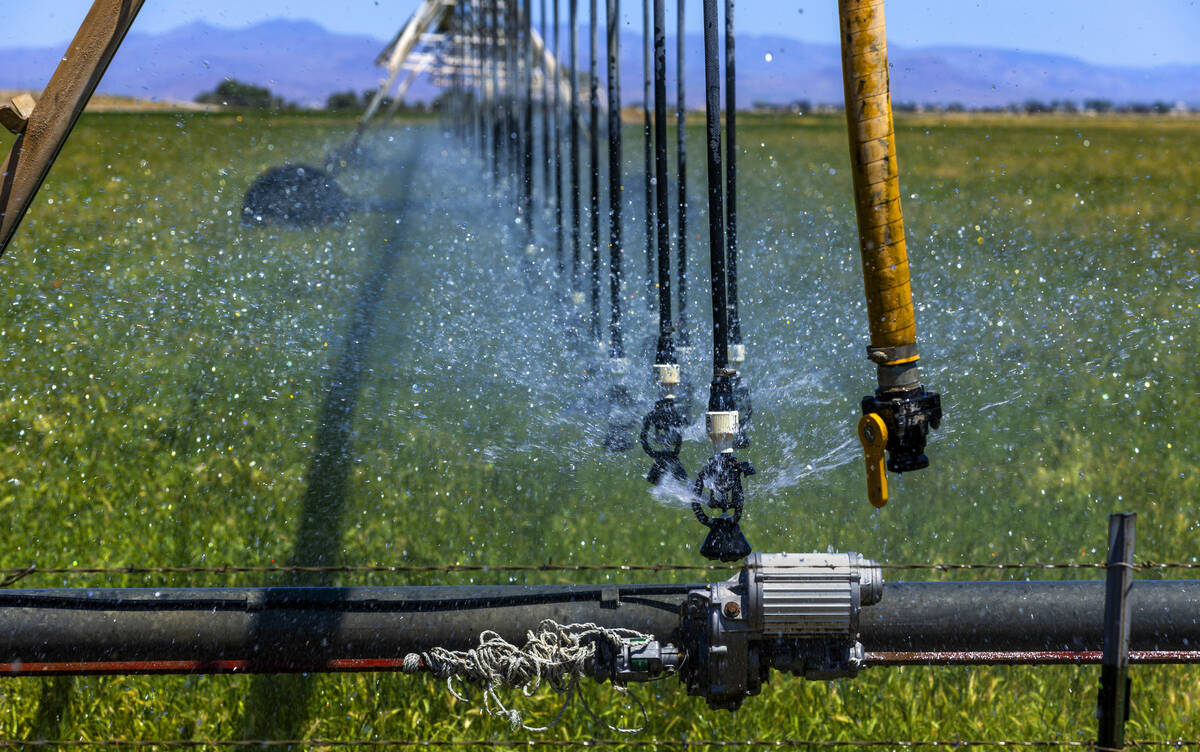‘Without water, you can’t live here’: Mining claims like redeclaration of war for some
AMARGOSA VALLEY — Across the street from Judi Faber’s quaint one-story house in Amargosa Valley is a wooden stick. Initially, the 77-year-old retiree didn’t think much of it.
But inside the plastic container tied to the plank is a folded-up paper — a foretelling note from a mining company claiming its stake to the minerals that may lie in the ground near her property. At best, it signals the company could begin exploratory drilling to assess the area for minerals. At worst, she could one day live next to an open-pit mine.
“Would they like a mine in their backyard?” Faber said. “Would they like it in their children’s yard? If they cared about the people, they would move somewhere else.”
Since the end of April, Rover Critical Minerals has hammered nearly 400 sticks marking its territory in the small town of Amargosa Valley, representing about 8,000 acres of mining claims right up to the border of California. And those are just the ones environmentalists have found so far. With no notification of residents required and a slow process to report new claims online, keeping tabs on new claims can be tricky.
Under the General Mining Act of 1872, the company is able to establish ownership on public land for a mere $165 per 20-acre parcel. Miners also can disturb up to 5 acres in each parcel without going through a federal environmental review, drilling holes in the sand that advocates say could alter the flow of groundwater.
That could be bad news for Faber, one of the town’s some 1,000 residents who rely on a domestic well to pump water from the ground to drink, shower, cook and irrigate their lawns.
Faber says her well is in poor shape already. Drilling a new, deeper one to reach a lower water table could cost upward of $20,000, she said.
“Without the well, you don’t survive,” Faber said. “Let’s face it: Without water, you can’t live here.”
Water woes already there for well owners
Faber’s not the only one who’s having trouble. Town board chair Carolyn Allen said there are some residents who have spoken at meetings with wells that draw up only air or sand, but no water.
Allen attributes much of the town’s current water issues to Ponderosa Dairies, a large cattle grazing operation in the middle of town that has sprawling, green fields. Activists say the dairy is the largest user of water of the Amargosa River, a small system that flows from Beatty into Death Valley National Park in California.
Drilling that’s exploratory or a new mine down the line could be devastating for rural residents, Allen said.
“This basin has been over-appropriated and over-pumped for many, many years,” she said. “Nobody’s really paying attention to it.”
Ed Goedhart, the manager of Ponderosa Dairies and a former Nevada assemblyman, said he doesn’t find Rover’s new claims to be much of a threat because the company’s lack of capital makes it unlikely a mine would be approved.
The dairy, which is the only one left in Southern Nevada, provides an essential service by reducing the time it takes for milk products to hit grocery shelves in Las Vegas, said Goedhart, who serves as vice chair of Nye County’s Water District Governing Board.
Goedhart acknowledges that Ponderosa Dairies owns a large share of the rights to draw groundwater in Amargosa Valley.
But even if the dairy closed — which he predicted would happen in the near future — it would sell off its water rights to the highest bidder, potentially widening the strain on the basin as well as the area of most-affected well owners.
“Those points of divergence are going to be scattered all over hundreds and hundreds of square miles,” Goedhart said. “Localized drawdown will recover, but there’ll be new areas of localized drawdown scattered throughout the basin.”
Battle brews with environmentalists
Rover Critical Minerals, based in Canada, quietly proposed a lithium mine last year within Ash Meadows Wildlife Refuge.
The refuge is a delicate and protected Nye County area with several endangered species like the Devils Hole pupfish, the rarest fish in the world.
After pushback from Amargosa Valley residents and a lawsuit from environmental groups, the Bureau of Land Management revoked approval in July of exploratory drilling up to 300 feet deep near vulnerable springs in the refuge.
In a recent statement, the company said it has engaged a top environmental consulting firm “to ensure the project does not contribute to declining groundwater levels in Ash Meadows.”
It has moved its claim boundaries 4 miles to the west based off a recommendation from the firm, and its new area in Amargosa Valley is “far above the groundwater,” the mining company said. Its proposed mining plan may become public in the coming months.
The company is taking steps to finance the project and plans to move forward with drilling, according to a statement released Wednesday.
Company managers “feel confident that exploration drilling can be achieved in the area, with less than five acres of planned disturbance,” CEO Judson Culter said in the statement.
The lawsuit against the Ash Meadows mine was a first for the Amargosa Conservancy, a nonprofit that has stayed out of the courtroom since its founding in 2004.
Because of the endangered species within the refuge, there was a clear connection between drilling and how that would affect those species’ habitat. Though Amargosa Valley lies within the same hydrological basin as Ash Meadows, making the case to cease operations for endangered species is a further stretch this time because of distance.
Amargosa Conservancy executive director Mason Voehl spent much of the past week taking stock of the extent of Rover’s claims, physically driving around the town and hiking into desert brush to find as many wooden stakes as possible. In some way, what’s happened feels like a redeclaration of war, he said.
“This is a major escalation in what’s already been a very contentious fight over the future of this valley,” Voehl said.
Two paths forward: Congress or the Interior Department
The best chance environmental groups have right now is to have issued what’s called a “mineral withdrawal,” which could suspend all mineral claims if a compelling case is made.
There are two ways to achieve one: Congress can introduce legislation to protect the area, or a land management agency can petition Secretary of Interior Deb Haaland, who has the power to initiate an environmental review if need is evident.
Even though U.S. Sen. Catherine Cortez Masto, D-Las Vegas, recently toured Ash Meadows and testified in front of Haaland about mining threats in the refuge, Voehl said he hopes to work on a petition to Haaland. Right now, he and Allen hope to garner the support of the Nye County Commission to demonstrate greater need.
With so much at stake in the Amargosa Desert, Voehl believes whatever happens will be telling for future land conflicts.
“This is going to send a signal across the West of how this is going to play out across sensitive landscapes writ large,” he said.
In the meantime, residents are left to wonder if exploratory drilling will exacerbate Amargosa Valley’s existing water issues.
Harv Dykstra, who saw surveyors install a wooden stake a few hundred feet from his home, said he hasn’t had any problem with the well on his property. But he fears that a mine could change that and said he’s disillusioned by the lack of community engagement from Rover.
“They have an obligation to educate us as to what they’re doing and how it’s going to impact us,” Dykstra said.
Contact Alan Halaly at ahalaly@reviewjournal.com. Follow @AlanHalaly on X.




